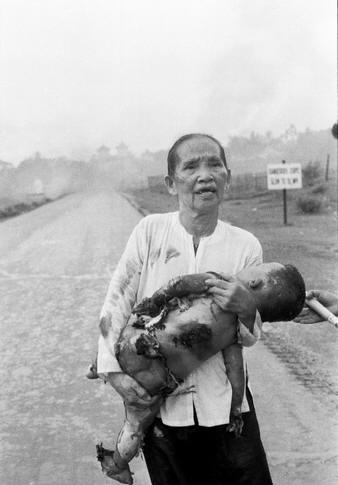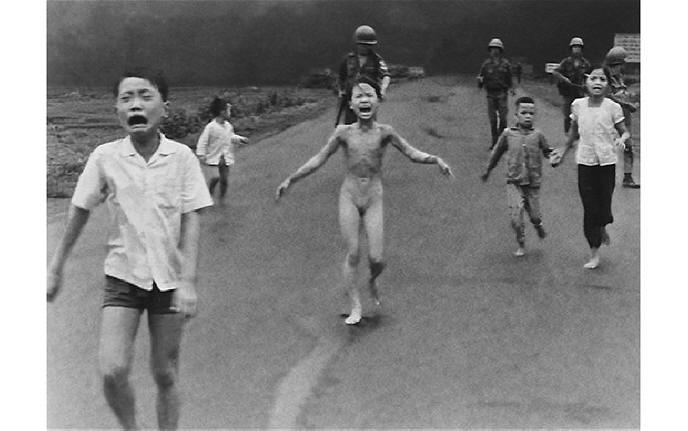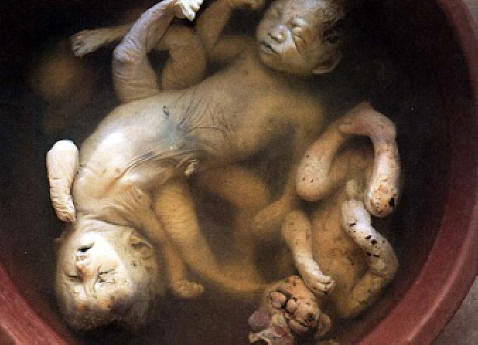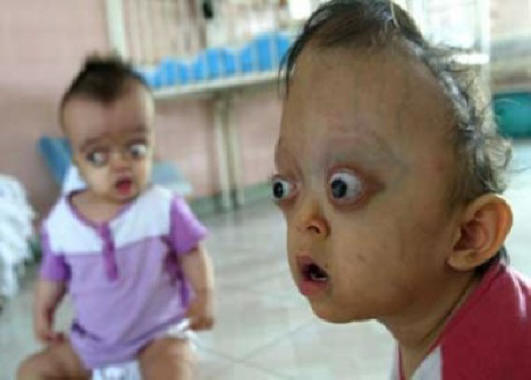
Moral Righteousness, Amnesia and Chemical Weapons
American Use of Chemical Weapons
The U.S. repeatedly presents itself as the world's "moral leader", implying that without its leadership, chaos and immorality would reign across the globe. Most Americans believe that we are the only nation capable of assuring that morality and human rights prevail throughout the world. This was recently displayed by the "moral outrage" expressed by the U.S. over Syrian use of chemical weapons.
How quickly we (conveniently) forget . . .
Napalm:
"U.S. troops used napalm from about 1965 to 1972 in the Vietnam War. Napalm is a mixture of plastic polystyrene, hydrocarbon benzene, and gasoline. This mixture creates a jelly-like substance that, when ignited, sticks to practically anything and burns up to ten minutes. The effects of napalm on the human body are unbearably painful and almost always cause death among its victims. "Napalm is the most terrible pain you can ever imagine" said Kim Phúc, a survivor from a napalm bombing. "Water boils at 212°F. Napalm generates temperatures 1,500°F to 2,200°F." Kim Phúc sustained third degree burns to portions of her body. She was one of the only survivors of such extreme measures
Napalm was first used in flamethrowers for U.S. ground troops; they burned down sections of forest and bushes in hopes of eliminating any enemy guerrilla fighters. Later on in the war B-52 Bombers began dropping napalm bombs and other incendiary explosives. Air raids that used napalm were much more devastating than flamethrowers; a single bomb was capable of destroying areas up to 2,500 square yards. Throughout the duration of the war, 1965 – 1973, eight million tons of bombs were dropped over Vietnam; this was more than three times the amount used in WWII."
SOURCE:
http://vietnamawbb.weebly.com/napalm-agent-orange.html
"And Vietnam was not the first time that the U.S. used chemical weapons against innocent civilians . . . "On the night of 9th March 1945, 339 American bombers took off, heading for Tokyo. Their payload: incendiary bombs filled with a gelatinous mixture of coconut oil soap, aluminium naphthenate and gasoline, developed just a few years before at Harvard University. The B-29 flew in at low altitude, and dropped 690,000 pounds of napalm within an hour. Tokyo’s paper and wood houses were soon engulfed in flames. Explosives merely kill those within the range of the bomb’s impact. Incendiary weapons spread death more widely since their targets provide the fuel for their propagation. The bombing created a firestorm. Gale-like winds swept through the streets of Tokyo, sending a column of fire 18,000 feet into the sky. Flying high overhead, American airmen could smell the stench of burning flesh. Not a building was left intact over 15 square miles of the city. Probably over 100,000 Japanese men, women and children died that night. . . .
Napalm was also decisive in Korea, proclaimed "the number one weapon" by the New York Herald Tribune. Tactically, it slowed the North Korean invasion and it protected the flanks of US marines during the Inchon amphibious landing. It was "the most outstanding single weapon employed in the Korean operations," according to one Pentagon staffer. The implication is that without napalm, the North and their Chinese allies would have conquered South Korea. Incendiary bombing raids also devastated Korea’s cities. After repeated bombing, Pyongyang, a city with a pre-war population of 500,000, was said to have only two buildings left standing.
America dropped 32,357 tons of napalm on Korea, twice as much as it dropped on Japan in 1945. But Vietnam took the heaviest hit: 388,000 tons of napalm between 1963 and 1973."
SOURCE:
http://www.prospectmagazine.co.uk/blog/napalm-america-korea-japan-vietnam/#.UlVEGyjobpA
EFFECTS OF NAPALM


|
|
|
And, of course, the iconic photo from the Vietnam War . . .

I was, unfortunately, unable to determine how many people died from the use of napalm in Vietnam. Interestingly, in response to the Question "How many people were killed by napalm in Vietnam?", the
WikiAnswers reply is: "It appears that napalm is a touchy subject and figures seem to be unavailable; except for possibly some extremely deep research on the part of the historian."
Agent Orange:
Agent Orange is a toxic chemical herbicide that was used from about 1965 – 1970 in the Vietnam War. It was one of the main mixtures used during
Operation Ranch Hand. Operation Ranch Hand was intended to deprive Vietnamese farmers and guerilla fighters of clean food and water in hopes they would relocate to areas more heavily controlled by the U.S. By the end of the operation over twenty million gallons of herbicides and defoliants were sprayed over forests and fields.Agent Orange is fifty times more concentrated than normal agricultural herbicides; this extreme intensity completely destroyed all plants in the area. Agent Orange not only had devastating effects on agriculture but also on people and animals. The
Vietnam Red Cross recorded over 4.8 million deaths and 400,000 children born with birth defects due to exposure to Agent Orange.
SOURCE: http://vietnamawbb.weebly.com/napalm-agent-orange.html
VICTIMS OF AGENT ORANGE




Gore Vidal frequently claimed that USA stands for "United States of Amnesia," because Americans are very good at forgetting their past, especially when it is something they would rather not remember.
However, while most Americans neither know nor remember very little about U.S. history and believe their government's political spin, the rest of the world doesn't.
* * * * *